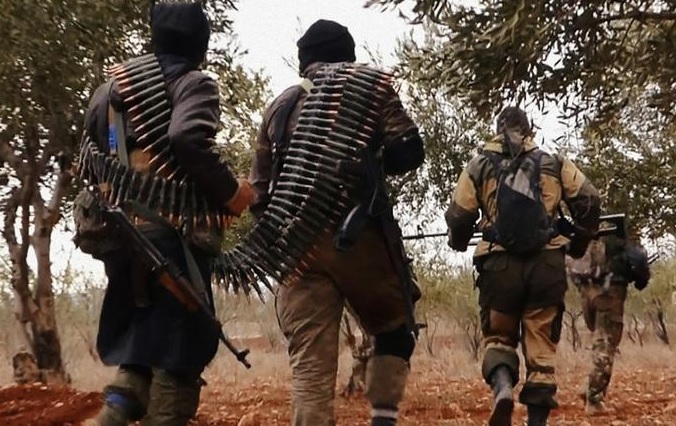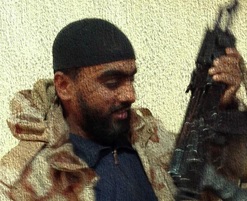Switching Places: New Threats from the Islamic State and Nusra Front

Over the past few weeks, the insurgent threat from al-Nusra Front, al-Qaeda’s (AQ) affiliate in Syria has grown, even as actions by the Iraqi government, Kurdish forces, and tribal fighters have significantly reduced the territory controlled by the Islamic State (IS) in Iraq. The result is that the two fighting groups seem to be changing places in the size and scope of the military threat they present to the region. Meanwhile, the announcement by IS members that the group has built a “dirty bomb” and smuggled it into Europe creates the possibility that IS now presents as great a terrorist danger as the “imminent threat” posed by AQ’s Khorasan Group.
I noted recently that there has been significant progress made against IS in Iraq, as forces allied to the Iraqi government have pushed the group out of portions of Diyala and Salah-al-Din provinces and stopped an offensive in Anbar province. The last week has seen continued successes against the group in these areas. In Anbar, tribal figures reached out to members of IS and convinced them to defect from the group, splitting the their support base on the border between Iraq and Syria. The IS members were apparently convinced to defect by the assassinations and “killing operations” carried out by IS against Iraqis. After serious combat by Iraqi, Kurdish, and other forces in Salah-al-Din, tribal sources have said that IS now only holds Mosul and two districts near the city, although heavy fighting is still taking place in Tikrit over control of this pivotal town.
The advances in Idlib and Hamah create the conditions for an offensive into Homs, a city that the government must hold if it is to maintain a connection with the coast and its Alawite stronghold.
As part of the attempt to surround Damascus, al-Nusra Front was able to continue a simultaneous offensive to the south of the capital. The offensive led to significant advances in Dara’a province, including the taking of the government’s military base in Dara’a city. Because Dara’a borders directly on Damascus province (Rif Dimashq), these advances set up a future offensive into Damascus proper. In addition, parts of the town of Shaykh Miskin, which also must be held if the capital is not to collapse, once again fell to al-Nusra Front, showing the weakness of Damascus’s defenses around the city.
This shows how much the capabilities of the AQ affiliate have grown over just the past year, and suggest that there will be a serious attempt made on Damascus that the government—if unaided—will be hard pressed to repel.
It is worth underlining al-Nusra Front, with its allies, has thus been able to maintain multiple, simultaneous offensives in widely separated areas of Syria—all of which have succeeded in taking territory from Assad’s forces and other opposition groups. This shows how much the capabilities of the AQ affiliate have grown over just the past year, and suggest that there will be a serious attempt made on Damascus that the government—if unaided—will be hard pressed to repel. These developments can be contrasted with a three-day effort by IS to take the last remaining government base in Deir al-Zour, which failed miserably. The repulse is all the more significant because IS claims to control the entire region around the base and yet has been incapable of defeating besieged government forces.
 It is too early, however, to write off IS, which has shown a great deal of resiliency in the past and a penchant for surprising experts and opponents with unexpected strategic moves. A good example of this tendency is the announcement by an IS leader that the group has built some sort of “nuclear device.” Other IS members, probably talking about the same weapon, claimed that the Islamic State had built a “dirty bomb” using nuclear materials seized in Mosul. A British member of the group then said that the “radioactive device” had entered Europe. Earlier, the same jihadist projected the effects of an attack with the alleged bomb in London.
It is too early, however, to write off IS, which has shown a great deal of resiliency in the past and a penchant for surprising experts and opponents with unexpected strategic moves. A good example of this tendency is the announcement by an IS leader that the group has built some sort of “nuclear device.” Other IS members, probably talking about the same weapon, claimed that the Islamic State had built a “dirty bomb” using nuclear materials seized in Mosul. A British member of the group then said that the “radioactive device” had entered Europe. Earlier, the same jihadist projected the effects of an attack with the alleged bomb in London.
While it is impossible to verify these claims, the mere possibility that IS has built and deployed a dirty bomb must be taken very seriously. Just a few months ago, the identification by the U.S. government of an “imminent threat” emanating from Syria led to repeated air strikes on the Khurasan Group; now, Europe and the U.S. might be facing a similar terrorist danger from IS. This possibility should not negate the optimism of the undoubted gains in Iraq, but it should temper our expectations for a quick end to this conflict.
